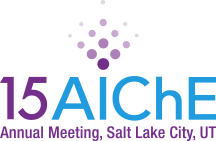

In this presentation, we will discuss hydrogen production using oxygen permeable MIEC (mixed ionic-electronic conducting) membranes for water thermolysis on the feed side and nonreactive or reactive flow on the sweep side. Hydrogen production is driven by thermal energy and the chemical potential gradient across the membrane. Process intensification is facilitated by the addition of POM (partial oxidation of methane) on the sweep side for syngas production using the permeated oxygen.
In this work, a type of perovskite membranes made of lanthanum, calcium and iron LCF-91 (La0.9Ca0.1FeO3-δ) are used to prove the concept experimentally[1] and to develop a framework for reactor design based on the dependency of the hydrogen production rate on the design and operating conditions. The material was chosen because of its chemical stability in a reducing environment and in the presence of hydrocarbon fuels. Our results confirm that LCF-91 membrane has good oxygen permeability as well as good stability in both water and methane environment. In the presence of the membrane, hydrogen production from water thermolysis at 950 - 1030 oC is enhanced by several orders of magnitude compared to homogeneous thermolysis. Adding methane to the sweep side using a symmetric membrane hardly impacts hydrogen production rates because of the low reactivity of methane, even at 990 oC, confirming that the rate limiting process is oxygen consumption on the sweep side. With the addition of a porous layer of the same LCF-91 perovskite material on that side, the hydrogen production rate rises by two orders of magnitude. The syngas production from partial oxidation or reforming of methane on the sweep side is also studied. At high temperature, the production of soot by methane pyrolysis can be suppressed by adding CO2 to promote the Boudouard reaction. Furthermore, a resistance-network model has been developed to model the hydrogen production rate in this membrane reactor at various conditions. Based on this model, the limiting steps for the hydrogen production process are identified and methods to enhance the production rate are proposed for the oxygen permeable membrane reactor. Other solutions to improve hydrogen production while preserving the membrane stability will also be discussed.
[1] X.Y. Wu, L. Chang, M. Uddi, P. Kirchen, A.F. Ghoniem, Toward enhanced hydrogen generation from water using oxygen permeating LCF membranes, PCCP, 17 (2015) 10093-10107.
